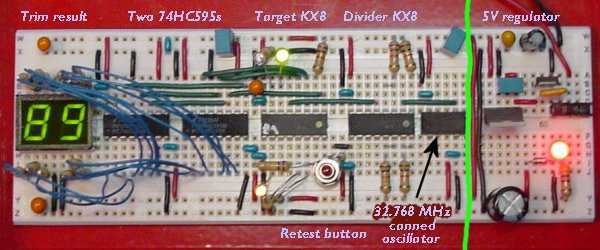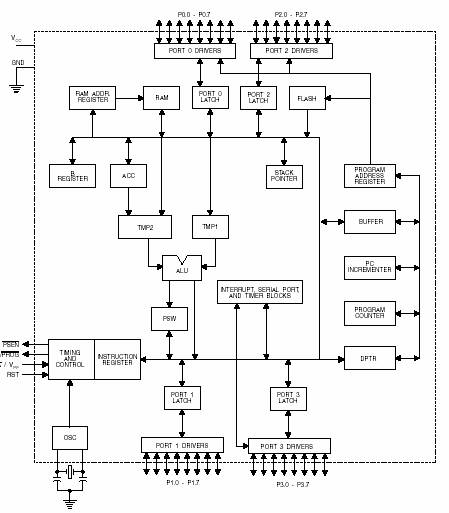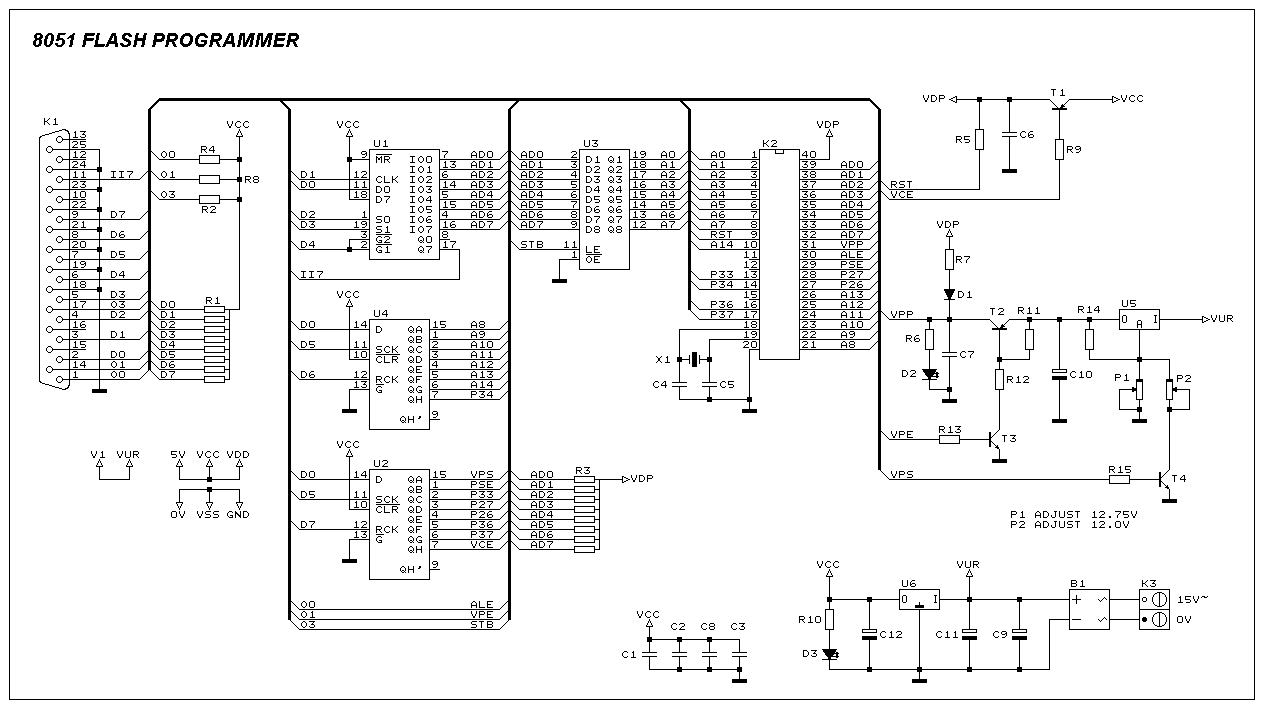
Trimming the Internal Clock Generator on the 68HC908KX8 Microcontroller

One of the nicest features of the 8-bit KX8 microcontroller (manufactured by Freescale Semiconductor) is that it includes an internal clock generator (ICG). This allows the chip to run without the trouble and expense of an external crystal or canned oscillator.
The 8-bit KX8 microcontroller is designed for a variety of embedded applications, providing a cost-effective solution for developers who require reliable performance without the complexity of additional components. The internal clock generator (ICG) is a key feature, enabling the microcontroller to maintain accurate timing and synchronization without relying on external oscillators, which can add to the overall size and cost of a circuit.
The ICG allows the KX8 microcontroller to operate at various clock frequencies, which can be configured depending on the application requirements. This flexibility is advantageous for optimizing power consumption, as the microcontroller can be set to run at lower frequencies during less demanding tasks, thereby extending battery life in portable devices.
In terms of circuitry, the KX8 microcontroller typically includes several pins dedicated to power supply, ground, and input/output functions. The absence of external clock circuitry simplifies the design layout, reducing the number of components and interconnections required on the printed circuit board (PCB). This leads to a more compact design and potentially lower production costs.
The microcontroller's architecture supports a range of peripherals, such as timers, analog-to-digital converters (ADCs), and communication interfaces (e.g., UART, SPI, I2C), which can be directly integrated into the system without additional timing constraints imposed by external clock sources. This integration enhances the overall performance and responsiveness of the application.
In summary, the KX8 microcontroller's internal clock generator is a significant advantage for designers looking to streamline their designs while maintaining efficient operation and reducing costs. Its ability to eliminate the need for external timing components makes it an attractive option for a wide range of embedded systems.One of the nicest features of the 8-bit KX8 microcontroller (manufactured by Freescale Semiconductor) is that it includes an internal clock generator (ICG). This allows the chip to run without the trouble and expense of an external crystal or canned oscillator.
🔗 External reference
The 8-bit KX8 microcontroller is designed for a variety of embedded applications, providing a cost-effective solution for developers who require reliable performance without the complexity of additional components. The internal clock generator (ICG) is a key feature, enabling the microcontroller to maintain accurate timing and synchronization without relying on external oscillators, which can add to the overall size and cost of a circuit.
The ICG allows the KX8 microcontroller to operate at various clock frequencies, which can be configured depending on the application requirements. This flexibility is advantageous for optimizing power consumption, as the microcontroller can be set to run at lower frequencies during less demanding tasks, thereby extending battery life in portable devices.
In terms of circuitry, the KX8 microcontroller typically includes several pins dedicated to power supply, ground, and input/output functions. The absence of external clock circuitry simplifies the design layout, reducing the number of components and interconnections required on the printed circuit board (PCB). This leads to a more compact design and potentially lower production costs.
The microcontroller's architecture supports a range of peripherals, such as timers, analog-to-digital converters (ADCs), and communication interfaces (e.g., UART, SPI, I2C), which can be directly integrated into the system without additional timing constraints imposed by external clock sources. This integration enhances the overall performance and responsiveness of the application.
In summary, the KX8 microcontroller's internal clock generator is a significant advantage for designers looking to streamline their designs while maintaining efficient operation and reducing costs. Its ability to eliminate the need for external timing components makes it an attractive option for a wide range of embedded systems.One of the nicest features of the 8-bit KX8 microcontroller (manufactured by Freescale Semiconductor) is that it includes an internal clock generator (ICG). This allows the chip to run without the trouble and expense of an external crystal or canned oscillator.
🔗 External reference





